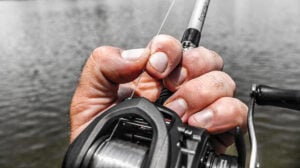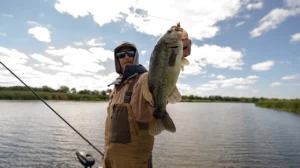It had been at least 10 years since I launched a flat-bottomed boat. Years of fishing seem to push every angler toward high-end fiberglass and electronics. However, the second I found myself back on a jon boat (sometimes spelled “john boat”) in a gin-clear backwater slough last summer, I was back where it all began.
And it was more than nostalgia. You forget after so much time how versatile these aluminum boats really are. There’s a quiet confidence — like a trusted pair of boots worn soft from miles of trudging through mud. It’s not about flash or speed, but rather getting into places where bigger boats can’t, silently moving through skinny water and putting your bait exactly where fish are holding. If you’ve ever found yourself frustrated trying to chase bass through tangled shallow bays or push through submerged timber, a jon boat might just be the missing piece in your fishing arsenal.
What Exactly Is a Jon Boat?

At its core, a jon boat is a flat-bottomed aluminum vessel, typically between 10 and 20 feet in length, with squared-off ends, a shallow draft, and bench-style seating. The defining feature is its hull shape — completely flat or near-flat — which allows the boat to ride on top of the water rather than displace it like a traditional V hull would. That hull design is what makes a jon boat so deadly in shallow or slow-moving water. You can slide across sandbars, poke around flooded timber, and beach the bow without worrying about hull damage.
But it’s also what makes these boats less suitable for big water. In chop, they simply can’t cut through waves; they slap them instead. And that can make for a wet, uncomfortable ride if you’re not rigged with the right trim and balance.
A Jon Boat’s Shallow Draft and Maximum Access

The average draft on a jon boat ranges from just 3 to 7 inches, depending on how it’s loaded and powered. That puts you in range of just about any backwater, tidal marsh, or weed-choked reservoir edge. The flat hull distributes the boat’s weight broadly, minimizing the displacement per square inch. In simple terms, you stay high in the water even with a full load of gear, a trolling motor, and a buddy up front.
This is also why jon boats are favored by bowfishermen and duck hunters. You’re dealing with unpredictable water levels, shallow entry points, and tight spots that require a combination of light hull weight and low-profile clearance. A fully rigged 16-foot jon boat with a 25-hp outboard can easily weigh under 500 pounds — light enough to trailer with a compact truck and launch off an unimproved ramp.
Construction: Aluminum Hulls, Welded Vs Riveted

Most jon boats are built from marine-grade aluminum, which keeps them durable, dent-resistant, and corrosion-tolerant in freshwater and brackish environments. But plenty of variety does exist. Riveted Jon boats are lighter and often more affordable, but they come with potential weak points at the seams, especially under high load or wave slap. Welded hulls, on the other hand, are stronger, stiffer, and better suited for long-term abuse. They’re also quieter, which matters more than you might think when you’re trying to prioritize stealth.
The aluminum itself is usually 5052-H34 or 5086 alloy, chosen for its balance of strength and corrosion resistance. Hull thickness is typically measured in gauges, with 0.080 inches (roughly 12-gauge) being standard on mid-sized boats. Some heavy-duty rigs used for commercial catfishing or heavy riser use step up to 0.100 inches or thicker.
Hull Shape and Stability
Not all jon boats are perfectly flat. Some use a modified-V bow that transitions to a flat aft section. This helps cut through mild chop while preserving most of the shallow-draft capability. Others feature a tunnel hull cutout along the centerline at the stern, designed to channel water directly to a surface-piercing prop. This setup lets you run a short-shaft outboard or surface-drive motor in less than 6 inches of water, provided trim and load are dialed in.
READ MORE: How to Build a Custom Jon Boat Casting Deck
Stability is another jon boat hallmark, particularly when fishing from a stationary position. The wide, flat bottom makes them rock-solid at rest, which is ideal for standing and casting. That said, the same characteristic makes them less forgiving in cross-currents or heavy lateral wave action. Hull beam matters here — look for a wider bottom width (not just overall beam) if you’re serious about fishing while standing or loading the boat with multiple anglers.
Powering a Jon Boat: Outboards, Jets and Surface Drives

When it comes to propulsion, jon boats are as versatile as they come. The most common setup is a short-shaft transom (15-inch) paired with a small gas outboard between 10 and 40 horsepower. That’ll get you on plane quickly and still keep your boat’s draft minimal. But in rivers with rocky bottoms or tight bends, a jet-drive outboard can turn a jon boat into a true shallow-water sled, letting you run in inches of water without a lower unit dragging bottom.
In extreme environments like Florida swamps, Louisiana marshes or Mississippi backwaters, surface-drive mud motors are king. These long-tail and belt-driven motors are designed to churn through vegetation, stumps, and muck where a traditional prop would choke. They’re heavier and louder, but if your mission includes punching through a foot of hydrilla, there’s no substitute.
Electric options like transom-mount trolling motors or bow-mount foot-controlled units are also common, especially on smaller jon boats. They allow for quiet positioning and course corrections without the need to fire up a gas motor. Some anglers even go all-electric with high-thrust 24V systems, though that does limit range unless you’re carrying serious battery capacity.
When a Jon Boat Outperforms a Bass Boat
There’s a time and place for every tool. And, in the right hands, a jon boat can outperform a high-end bass rig. That flooded creek mouth you couldn’t idle into last spring? That silted-up river run where the boat ramp is basically a gravel slide? Say hello to your new best friend. They’re the tool of choice when you value stealth, simplicity, and access at a very affordable price.










